The Definitive Guide to the Palace of the Heavenly King: History, Culture, and Significance
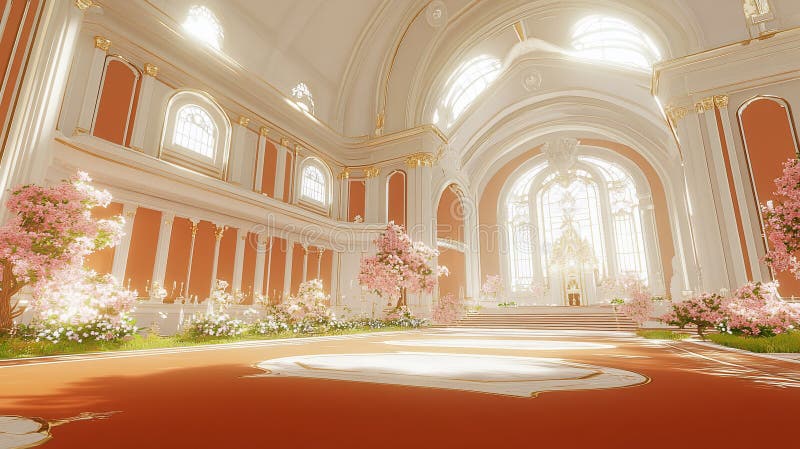
An Essential Guide to Visiting Palace Of The Heavenly King
Nestled in the heart of Nanjing, the Palace of the Heavenly King, or Tianwangfu, serves as a poignant reminder of one of the most tumultuous chapters in Chinese history—the Taiping Rebellion. This grand yet understated museum stands as a testament to the aspirations and struggles of the Taiping Heavenly Kingdom, where the leader, Hong Xiuquan, famously claimed to be the younger brother of Jesus Christ. This unique blend of religious fervor and revolutionary zeal sets the stage for an exploration of a movement that not only reshaped Nanjing but also left an indelible mark on China at large.
In this guide, we will delve into the significance of the Palace of the Heavenly King, offering insights into its historical context and the legacy of the Taiping Rebellion. We’ll provide practical information for your visit, including opening hours and accessibility, alongside a glimpse into the museum’s exhibits that feature original artifacts, imperial regalia, and informative displays—some with English translations. Additionally, we will highlight nearby attractions and suggest experiences to enhance your journey through Nanjing, ensuring you uncover the rich tapestry of stories that this city has to offer. Whether you’re a history buff or a curious traveler, the Palace of the Heavenly King promises a compelling narrative that beckons exploration.
In This Guide
- An Essential Guide to Visiting Palace Of The Heavenly King
- The Rich History and Legends of Palace Of The Heavenly King
- Main Highlights: What You Absolutely Can’t Miss
- Planning Your Visit: A Practical Guide
- Tickets: Prices, Booking, and Tips
- How to Get There: A Complete Transportation Guide
- Local Cuisine and Accommodation Nearby
- Frequently Asked Questions
- Final Thoughts on Your Trip
The Rich History and Legends of Palace Of The Heavenly King
A Window into a Turbulent Past
Nestled in the heart of Nanjing, the Palace of the Heavenly King, or Tiānwángfǔ (天王府), stands as a testament to a pivotal chapter in Chinese history. This grandiose structure served as the headquarters for the Taiping Heavenly Kingdom during one of the bloodiest civil wars in history—the Taiping Rebellion. To truly appreciate the significance of this site, one must delve into its rich history filled with ambition, mysticism, and tragic consequences.
The Rise of the Taiping Heavenly Kingdom
In the mid-19th century, China was embroiled in turmoil. The Qing Dynasty faced immense internal strife, and amidst this chaos emerged Hong Xiuquan, a young man who claimed to be the brother of Jesus Christ. Inspired by a unique blend of Christianity and traditional Chinese beliefs, Hong launched the Taiping Rebellion in 1850, seeking to establish a “Heavenly Kingdom” founded on his radical vision of social and religious reform.
The Palace of the Heavenly King was constructed in 1853 as the capital of this ambitious movement. It symbolized hope for many who sought to challenge the oppressive Qing rule. The palace served not only as a political center but also as a sanctuary for followers of the Taiping ideology.
Architectural Splendor and Symbolism
The architectural design of the Palace reflects the grandeur of the Taiping movement itself. Intricate wooden structures adorned with vibrant colors and religious motifs dominated the landscape. The palace was not merely a seat of power; it was a representation of a new social order envisioned by Hong Xiuquan and his followers. The legends surrounding the palace speak of its opulence and the fervent devotion of its inhabitants, who believed they were on a divine mission to reshape China.
A Fateful Downfall
Despite its initial success, the Taiping Heavenly Kingdom faced numerous challenges. Internal power struggles, military defeats, and a lack of coherent governance led to its downfall. The Qing forces, aided by foreign powers, launched a brutal campaign against the Taiping, culminating in the ultimate capture of Nanjing in 1864. The palace, once a bustling center of revolutionary fervor, fell into disrepair, symbolizing the tragic end of the Taiping dream.
Legends of the Palace
The Palace of the Heavenly King is steeped in legends that echo the mysticism of the Taiping movement. One popular tale recounts how Hong Xiuquan received divine visions that guided his revolutionary path. These visions, often interpreted as messages from a higher power, inspired fervent loyalty among his followers, who believed they were fighting for a sacred cause.
Another legend speaks of the palace’s hidden treasures—artifacts imbued with spiritual significance, said to grant protection and strength to those who possessed them. Such stories not only enhance the allure of the palace but also reflect the deep-seated beliefs that fueled the Taiping Rebellion.
Reflection and Legacy
Today, the Palace of the Heavenly King serves as a museum, albeit one that has faced criticism for its underwhelming exhibitions. While many artifacts from the Taiping era are housed in the nearby Presidential Palace, the site still offers insights into a tumultuous period that reshaped Chinese society. Visitors can explore the remnants of this grand palace and ponder the legends that fill its halls, connecting with a narrative that continues to resonate in Chinese history.
As you wander through the remnants of the Palace of the Heavenly King, take a moment to reflect on the rich tapestry of history and legend that surrounds this remarkable site. It stands not only as a monument to a failed revolution but also as a reminder of the enduring human spirit and the quest for a better world.
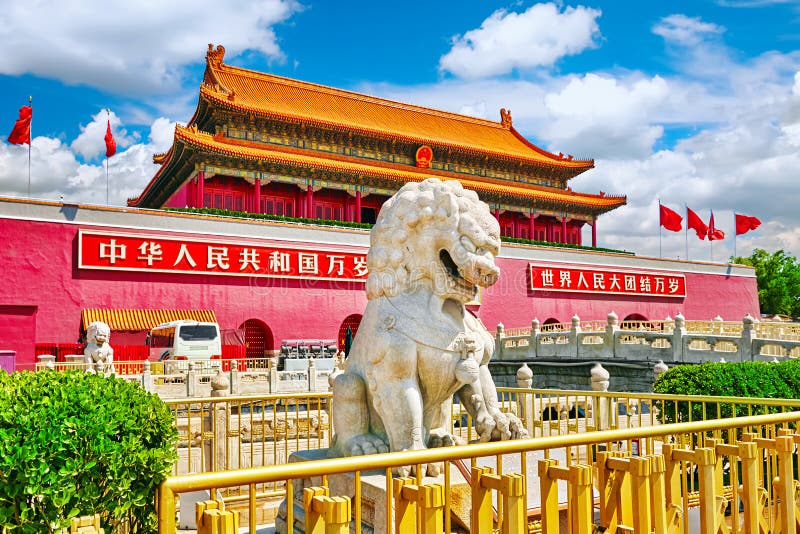
Palace Of The Heavenly King.
Main Highlights: What You Absolutely Can’t Miss
The Grand Entrance Hall
As you approach the Palace of the Heavenly King, the impressive Grand Entrance Hall greets you with its majestic architecture. This grand structure showcases traditional Chinese design elements, from intricately carved wooden beams to beautifully painted eaves. Step inside to feel the history that once buzzed with the energy of the Taiping rebels. Practical Tip: Don’t forget to capture photos of the ornate details, especially the dragon motifs symbolizing power and protection—perfect for your travel album!
Exhibition Halls of the Taiping Era
Venture into the four exhibition halls dedicated to the Taiping Heavenly Kingdom, where you’ll discover a treasure trove of artifacts and documents from this pivotal moment in Chinese history. Among the highlights are original uniforms, an imperial jade seal, and Hong Xiuquan’s imperial robe. Each item provides a glimpse into the life and aspirations of the Taiping leaders. Practical Tip: Many displays come with English translations, making it easier to engage with the exhibits. Allocate at least an hour to fully absorb the fascinating stories behind each artifact.
The Heavenly King’s Robe
One of the most striking displays in the museum is the Heavenly King’s Robe, a vivid representation of the unique Taiping culture. The robe, adorned with intricate embroidery and vibrant colors, symbolizes the authority of Hong Xiuquan, who claimed divinity. This piece encapsulates the mysticism that surrounded the Taiping movement. Practical Tip: Stand back and admire the robe from different angles; the craftsmanship is remarkable and tells a story of its own.
Original Documents and Manuscripts
Delve deeper into the rebellion’s history by viewing original documents and manuscripts housed within the museum. These historical texts offer insights into the strategies and ideologies that fueled the Taiping Rebellion, a conflict that shaped modern China. Practical Tip: Take your time reading through the translations; each document is a window into the past that enriches your understanding of this complex period.
The Taiping Propaganda Museum
Although some reviews suggest it could benefit from a curatorial overhaul, the Taiping Propaganda Museum still offers valuable insights into the narratives surrounding the rebellion. The displays, albeit basic, provide a critical perspective on the movement’s impact on Chinese history. Practical Tip: Approach the exhibits with an open mind, and consider the broader context of the Taiping Rebellion within Chinese history. Engaging with the narratives can lead to interesting discussions with fellow visitors.
The Surrounding Gardens
After immersing yourself in history, take a moment to stroll through the serene gardens surrounding the Palace. These landscaped grounds provide a peaceful respite and a chance to reflect on the stories you’ve encountered inside. The lush greenery and traditional Chinese landscaping create a tranquil atmosphere. Practical Tip: Bring a book or a journal and find a quiet spot to sit and absorb the surroundings—the perfect way to unwind after an enlightening visit.
The Presidential Palace Connection
Just a short distance from the Palace of the Heavenly King lies the Presidential Palace, where many of the original Taiping artifacts are displayed. A visit here allows you to see the most significant remnants of the era, including additional artifacts that complement what you’ve seen at the Heavenly King’s Palace. Practical Tip: Plan your itinerary to include the Presidential Palace for a more comprehensive understanding of Nanjing’s rich history. The two sites together create a powerful narrative of the Taiping Heavenly Kingdom.
Exploring the Palace of the Heavenly King is not just a visit to a museum; it’s an invitation to step into a critical chapter of Chinese history. Don’t miss out on these highlights that will enrich your experience and understanding of the Taiping Rebellion.
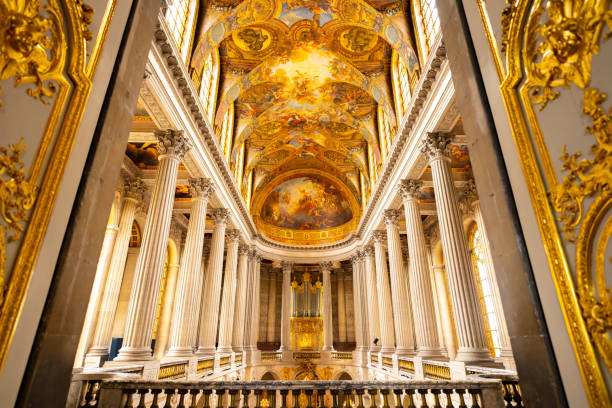
Palace Of The Heavenly King.
Planning Your Visit: A Practical Guide
Best Time to Visit
The Palace of the Heavenly King is open year-round, but the best time to visit is during the spring (April to June) and autumn (September to November) months. During these periods, Nanjing enjoys mild weather, making it comfortable for walking around the museum and exploring the nearby attractions. Avoid visiting during the peak summer months (July and August) when temperatures can soar, resulting in a less enjoyable experience.
Recommended Itinerary
Half-Day Visit:
– Morning: Start your day early to beat the crowds. Arrive around 9 AM and spend about 1-2 hours exploring the four exhibition halls. Be sure to read the English translations for an insightful understanding of the Taiping Rebellion.
– Late Morning: After your museum visit, take a leisurely stroll through the surrounding gardens to appreciate the historical ambiance.
– Lunch: Head to a nearby restaurant for lunch, where you can try local specialties like salted duck or Nanjing-style dumplings.
– Afternoon: If time permits, consider visiting the nearby Presidential Palace or other historical sites like the Ming City Wall to enrich your understanding of Nanjing’s past.
Photography Tips
- Golden Hour: For stunning photos, visit during the golden hours—early morning or late afternoon—when the lighting is soft and golden.
- Indoor Shots: Use a camera with good low-light performance or a smartphone with a robust camera to capture the museum’s artifacts, as some areas may be dimly lit.
- Respectful Photography: Be mindful of museum regulations regarding photography, and always avoid using flash, especially near delicate artifacts.
What to Wear
- Comfortable Shoes: Expect to do a fair amount of walking, so wear comfortable shoes.
- Layers: Nanjing’s weather can change quickly, so dress in layers. A light jacket may be necessary during the cooler months.
- Respectful Attire: While there are no strict dress codes, dressing modestly is recommended, especially when visiting historical sites.
Insider Tips
- Timing Your Visit: Aim to visit on a weekday to enjoy a quieter experience. Weekends can be crowded with local visitors and tourists.
- Guided Tours: Consider joining a guided tour for a deeper understanding of the Taiping Rebellion. Local guides can offer insights and stories that you might miss on your own.
- Combine Visits: The Palace of the Heavenly King is close to other historical sites. Plan to combine your visit with the Presidential Palace or the Ming City Wall for a comprehensive historical journey.
- Souvenir Shopping: Look for unique Taiping-themed souvenirs in nearby shops. Many local artisans create crafts inspired by this fascinating period in Chinese history.
- Local Cuisine: Don’t miss out on trying Nanjing’s famous salted duck. There are several eateries nearby that specialize in this dish, making for a delicious post-visit meal.
By following this practical guide, your visit to the Palace of the Heavenly King will be both enriching and enjoyable, allowing you to delve into an often-overlooked chapter of Chinese history.
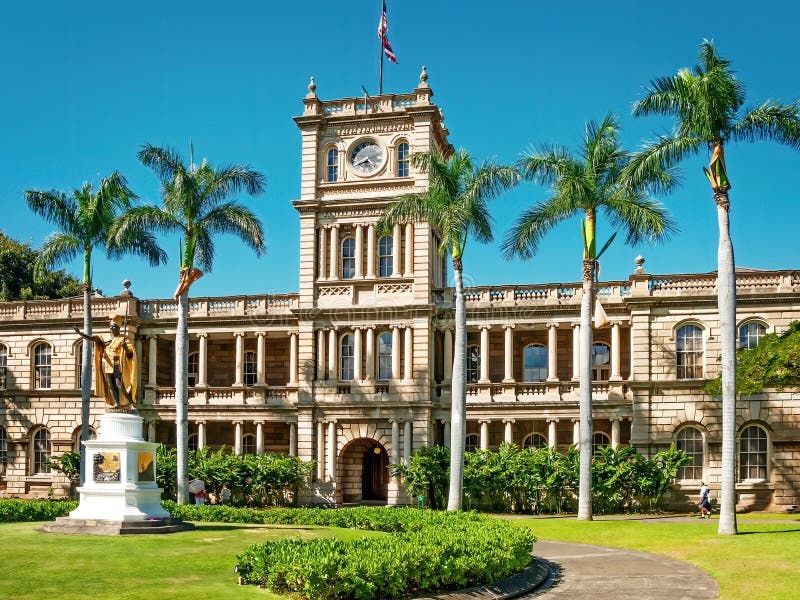
Palace Of The Heavenly King.
Tickets: Prices, Booking, and Tips
Visiting the Palace of the Heavenly Kingdom (天王府) offers a unique glimpse into a pivotal chapter of Chinese history. Here’s what you need to know about tickets, booking, and tips to enhance your experience.
| Ticket Type | Price (CNY) | Includes |
|---|---|---|
| Adult Admission | 30 | Access to four exhibition halls |
| Student Admission | 15 | Access for students with valid ID |
| Senior Admission | 15 | Access for seniors (60+) |
| Family Ticket (2 Adults + 2 Children) | 75 | All general access for a family of four |
Booking Information
To ensure a smooth visit, it is highly recommended to book your tickets in advance. This can be done through various online platforms, including popular travel websites or the official museum site. Booking ahead not only guarantees your entry but also helps you avoid long lines at the entrance.
Some platforms even offer flexible cancellation policies, giving you peace of mind as your travel plans evolve.
Tips for Visiting
-
Check Opening Hours: The Palace of the Heavenly Kingdom is open 24 hours a day, so you can visit at your convenience. However, consider going early in the morning or later in the evening to enjoy a quieter experience.
-
Explore Nearby Attractions: After your visit, explore other historical sites in Nanjing, such as the Memorial Hall of the Victims in the Nanjing Massacre or the Sun Yatsen Mausoleum, to make the most of your day.
-
Guided Tours: For a deeper understanding of the Taiping Rebellion and its significance, consider joining a guided tour. Many tours provide enriching narratives that can enhance your appreciation of the exhibits.
-
Bring Your ID: If you’re a student or a senior, don’t forget to bring your ID to take advantage of discounted ticket prices.
By planning ahead and following these tips, your visit to the Palace of the Heavenly Kingdom will be both educational and enjoyable!
How to Get There: A Complete Transportation Guide
Arrival at the Palace of the Heavenly King
Visiting the Palace of the Heavenly King (天王府) in Nanjing offers a unique glimpse into a pivotal moment in Chinese history. To ensure a smooth journey to this historical site, here’s a comprehensive transportation guide.
From the Nearest Major City: Nanjing
By Train:
Nanjing is well-connected by high-speed rail to major cities across China. The two primary train stations are Nanjing South Railway Station (南京南站) and Nanjing Railway Station (南京站).
- From Shanghai:
- Duration: Approximately 1 hour 30 minutes.
-
Cost: Ranges from ¥150 to ¥300 (approximately $23 to $46) depending on the train class.
-
From Beijing:
- Duration: Approximately 4 hours.
- Cost: Ranges from ¥400 to ¥800 (approximately $62 to $124).
By Bus:
Nanjing’s long-distance bus station has services from various cities.
- From Shanghai:
- Duration: Approximately 3.5 to 4 hours.
-
Cost: Around ¥100 (approximately $15).
-
From Hangzhou:
- Duration: Approximately 2.5 to 3 hours.
- Cost: Around ¥80 (approximately $12).
By Car:
If you prefer driving, Nanjing is accessible via major highways.
- From Shanghai: About 300 km, taking around 3 to 4 hours, depending on traffic.
- From Hangzhou: Approximately 200 km, around 2.5 to 3 hours.
Getting to the Palace of the Heavenly King
Once you arrive in Nanjing, the Palace of the Heavenly King is conveniently located in the city. Here’s how to get there:
By Metro:
– Take Line 1 of the Nanjing Metro and alight at the “Gulou” station (鼓楼站). From there, transfer to Line 2 and get off at “Xinjiekou” station (新街口站). The palace is a short 15-minute walk from the station.
By Taxi or Ride-Sharing:
– Taxis are readily available, and a ride from the city center to the Palace of the Heavenly King will cost about ¥20 to ¥30 (approximately $3 to $5) and take around 15-20 minutes.
– Ride-sharing apps like Didi are also available and convenient for international travelers.
By Bus:
– Several local bus lines pass through the area near the palace. Look for buses numbered 4, 9, or 36, and disembark at the “Taiping Heavenly Kingdom Memorial” stop, which is a short walk from the entrance.
Getting Around the Scenic Area
The Palace of the Heavenly King is part of a larger historical complex, so planning your visit is essential.
On Foot:
– The best way to explore the palace is on foot. The area is pedestrian-friendly, allowing you to soak in the historical atmosphere at your own pace.
Guided Tours:
– Several local tour companies offer guided tours that include transportation to and from the palace, along with insights into the Taiping Rebellion’s history. Prices typically range from ¥200 to ¥400 (approximately $30 to $62) per person, depending on the package.
Bicycles:
– Renting a bicycle in Nanjing can be a fun and eco-friendly way to explore the surrounding areas at your leisure. Many bike-sharing services are available, allowing you to pick up and drop off bikes conveniently.
Conclusion
The Palace of the Heavenly King is a must-visit for those interested in China’s complex history. With various transportation options available, getting there is both easy and affordable, making it an accessible destination for international travelers. Plan your journey, and prepare to immerse yourself in the rich narrative of the Taiping Heavenly Kingdom!

Palace Of The Heavenly King.
Local Cuisine and Accommodation Nearby
Exploring the Palace of the Heavenly King (天王府) is a journey through history, and what better way to complement your visit than by indulging in Nanjing’s local cuisine and enjoying a comfortable stay nearby?
Culinary Delights
Nanjing’s food scene is rich and diverse, offering a tantalizing array of flavors that reflect its storied past. Here are a few local dishes you simply can’t miss:
-
Salted Duck (盐水鸭)
A Nanjing specialty, this dish features duck that is brined with a blend of salt and spices, resulting in tender, flavorful meat with a savory skin. It’s often served cold, making it a refreshing option, especially in warmer months. -
Duck Blood Soup (鸭血粉丝汤)
This comforting dish brings together duck blood, tofu, vermicelli noodles, and a flavorful broth. It’s a hearty choice that warms you up and showcases the city’s love for duck in various forms. -
Nanjing-style Dumplings (南京水饺)
These dumplings are filled with a mix of pork and vegetables, and are typically boiled and served with a soy-based dipping sauce. They are a favorite among locals and make for a delightful snack or meal. -
Suan Ni Bai Rou (蒜泥白肉)
This dish consists of thinly sliced pork belly served with a zesty garlic sauce. The combination of the rich, tender meat and the sharpness of garlic creates a mouthwatering experience that captures the essence of Nanjing’s culinary tradition.
Accommodation Options
Whether you’re looking for luxury, a boutique experience, or budget-friendly options, Nanjing has a variety of accommodations to suit your needs:
-
Luxury: InterContinental Nanjing
Located not far from the Palace, this elegant hotel offers stunning views of the Yangtze River, plush rooms, and top-notch amenities including a spa and fine dining. It’s perfect for travelers seeking a luxurious experience. -
Boutique: The Suning Universal Hotel
This stylish boutique hotel blends modern design with traditional Chinese elements. Situated in the heart of Nanjing, it provides a unique atmosphere along with personalized service, making it ideal for those wanting a memorable stay. -
Budget: 7 Days Inn Nanjing
A practical choice for budget-conscious travelers, this hotel offers clean and comfortable rooms at affordable prices. Its central location allows for easy access to local attractions, making it a convenient base for your exploration. -
Hostel: Nanjing Dreamer Youth Hostel
For backpackers and those looking to meet fellow travelers, this hostel provides a friendly atmosphere and dormitory-style accommodations. It’s a great way to save money while enjoying the vibrant local culture.
Nanjing’s rich history and culinary traditions await you, ensuring a memorable visit to the Palace of the Heavenly King and its surroundings. Enjoy every moment of your exploration!
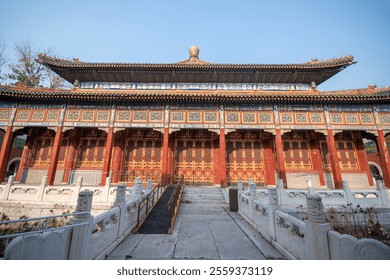
Palace Of The Heavenly King.
Frequently Asked Questions
Frequently Asked Questions
1. Is the Palace of the Heavenly King suitable for children and the elderly?
Yes, the Palace of the Heavenly King can be suitable for both children and the elderly. The museum features accessible pathways and is not physically demanding. However, as some content may be complex, parents and guardians might want to engage children with simpler explanations of the exhibits.
2. Are there English signs and translations available?
Yes, many of the displays at the museum include English translations. While the primary focus is on Chinese historical context, you will find sufficient information available for English-speaking visitors to understand the significance of the exhibits.
3. How much time should I plan to spend at the Palace of the Heavenly King?
Most visitors typically spend about 1 to 2 hours exploring the Palace of the Heavenly King. This should give you enough time to walk through the exhibition halls, read about the Taiping Rebellion, and appreciate the artifacts displayed.
4. What are the operating hours for the Palace of the Heavenly King?
The museum is open 24 hours a day, seven days a week. You can visit at any time that suits your schedule. However, it’s advisable to go during daylight hours to fully appreciate the surroundings and for safety reasons.
5. Are there any guided tours available?
Yes, guided tours are often available, enhancing your understanding of the Taiping Rebellion and the palace’s historical context. Check with local tour operators for options that include English-speaking guides.
6. Is there an entrance fee?
The entrance fee for the Palace of the Heavenly King is typically modest, but it’s best to verify the latest pricing before your visit. Free entry may be available on certain days, so keep an eye out for any special promotions.
7. Can I take photographs inside the museum?
Photography policies can vary, so be sure to check for any signs regarding photography upon entering. While some areas may allow photos, others may restrict them to preserve the integrity of the exhibits.
8. Are there facilities for food and drinks?
While the museum itself may not have dining facilities, there are often snacks and drinks available at nearby vendors or cafes. Consider planning to enjoy a meal or refreshments before or after your visit, as there are many local eateries in the area.
Final Thoughts on Your Trip
Visiting the Palace of the Heavenly King is not merely about stepping into a museum; it’s about traversing through a tumultuous chapter of Chinese history that often goes unnoticed. Here, you will encounter the echoes of the Taiping Rebellion, a movement that shaped the very fabric of modern China. While the museum may not boast a vast array of artifacts, it offers a unique opportunity to delve into the complexities of a historical narrative that is rich with mysticism and struggle.
As you walk through the exhibition halls, take a moment to reflect on the stories behind the displays—original documents, uniforms, and the imperial robe of the Heavenly King—that bring life to this oft-overlooked period. Although some reviews express disappointment over the presentation, your visit can still be a chance to engage with a significant part of history that deserves more attention.
Whether you’re a history buff or simply curious about the past, the Palace of the Heavenly King invites you to explore, learn, and reflect. Leave with a deeper understanding of how history informs the present and the resilience of the human spirit. Embrace the journey, and who knows? You may find inspiration in the very narratives that once tore a nation apart. Your adventure in Nanjing is a step closer to appreciating the complexities of our world’s history—so don’t miss this opportunity to uncover the layers of the past.